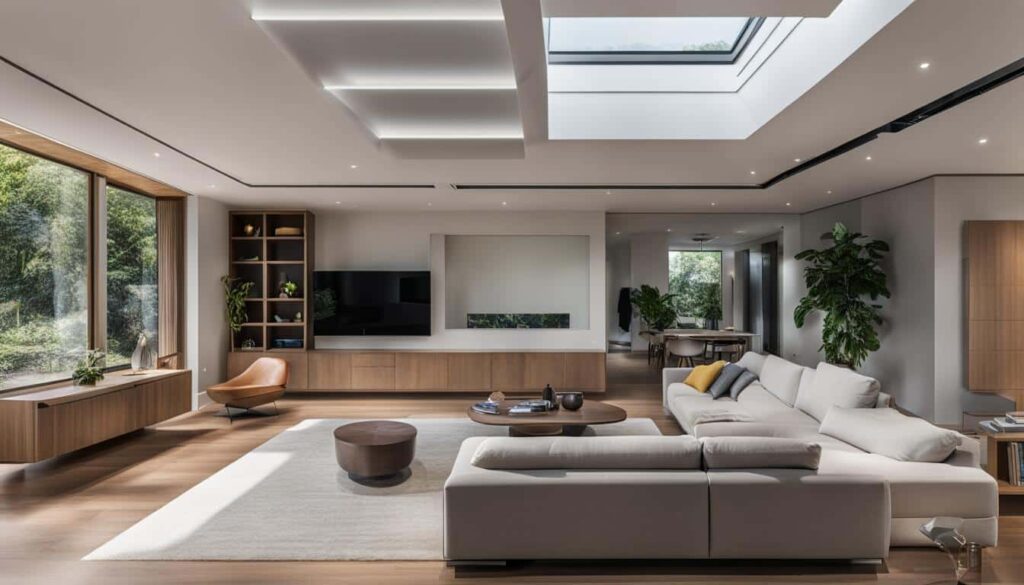Ducted air conditioning systems are a popular option for producing the perfect indoor atmosphere since they can distribute heating and cooling evenly and effectively across a home or business. Unlike traditional split systems, ducted air conditioners distribute air via ducts hidden in walls or ceilings, offering a seamless and unobtrusive solution. But what makes ducted systems truly exceptional is their versatility in being tailored to meet the specific needs of a space.
Introduction To Ducted Air Conditioning
Through a central unit connected to a network of ducts, ducted air conditioning systems are intended to heat or cool numerous rooms. The system can be zoned, allowing you to control airflow and temperature in different areas independently. This is especially useful in larger houses or workplaces where different areas require varied climates.
The installation process, while more complex than a single-unit system, ensures a long-lasting solution that integrates seamlessly into your property. However, achieving the perfect installation requires a careful assessment of your space and a customised approach.
Assessing Your Space
Before ducted air conditioner installations, it’s crucial to evaluate the unique characteristics of your property. The system’s design and efficiency are greatly influenced by elements such as size, layout, insulation, and usage patterns.
For example, a sprawling open-plan living area may require a more powerful unit with multiple ducts to ensure consistent airflow, while a smaller, compartmentalised home might benefit from a less intensive setup with zoning for individual rooms. Similarly, properties with high ceilings or poor insulation may demand additional considerations to prevent energy loss and ensure optimal performance.
Professional installers conduct detailed assessments to identify the best locations for ducts, vents, and the central unit. They also consider the aesthetics of your space, ensuring the system remains unobtrusive and complements the overall design of your home or office.
The Role Of Zoning
The capacity to implement zoning is one of the main benefits of ducted air conditioning systems. Zoning allows you to divide your property into distinct areas or zones, each with independent temperature controls. This feature not only enhances comfort but also improves energy efficiency by ensuring you’re not cooling or heating unused spaces.
For instance, during the day, you might want to focus on cooling living areas while leaving bedrooms untouched. At night, the opposite might apply. With a well-designed zoning system, you can optimise energy usage and tailor the system to your daily routines.
Customising For Aesthetics
Modern ducted air conditioning systems are designed to blend effortlessly into any interior. Because vents and grilles are available in a range of designs, dimensions, and coatings, you can select one that complements your interior decor. Whether you prefer sleek, minimalist designs or more traditional looks, professional installers can recommend solutions that meet your aesthetic preferences.
Additionally, the central unit is typically placed in a concealed location, such as an attic or a cupboard, ensuring it doesn’t detract from the visual appeal of your space. This discreet approach makes ducted air conditioning systems ideal for those who value a clean, uncluttered environment.
Energy Efficiency And Environmental Considerations
Modern installations must take energy efficiency into account, and when designed appropriately, ducted systems perform exceptionally well in this regard. Advanced features like inverter technology and smart thermostats enhance the efficiency of ducted air conditioners by adjusting power output based on real-time needs.
Moreover, by customising the system to your property’s specific requirements, installers can minimise energy wastage. Properly designed ducts and strategically placed vents ensure even airflow, eliminating hotspots and reducing the strain on the central unit.
For environmentally conscious homeowners, there are also options to integrate ducted systems with solar power or energy-efficient components, further reducing the environmental impact of your cooling and heating needs.
Why Professional Installation Matters?
While the appeal of ducted air conditioning lies in its versatility, achieving the best results requires professional expertise. A skilled installer ensures that every component is precisely calibrated to your space, from the capacity of the central unit to the placement of ducts and vents.
Problems including uneven cooling, high energy use, and noise disruptions might result from improper installation. Professionals use advanced tools and techniques to avoid these pitfalls, delivering a system that operates efficiently and quietly.
The Long-Term Benefits Of A Tailored System
Beyond just providing instant comfort, investing in a customised ducted air conditioning system has long-term advantages. When properly maintained, these long-lasting systems will continue to operate reliably for many years. Their unobtrusive design and energy-efficient operation also add value to your property, making them a wise investment for homeowners and businesses alike.
By tailoring the system to your space, you maximise its efficiency, functionality, and aesthetic appeal. The end result is a heating and cooling system that fits your needs, improves your way of life, and provides unmatched comfort all year round.
Conclusion
Ducted air conditioning installations are more than just a practical solution for temperature control; they are an investment in comfort, efficiency, and style. By tailoring the system to the unique requirements of your space, you ensure optimal performance and long-term satisfaction. Whether for a home or a commercial property, a professionally designed and installed ducted air conditioning system provides the perfect balance of functionality and elegance, transforming any space into a haven of comfort.





